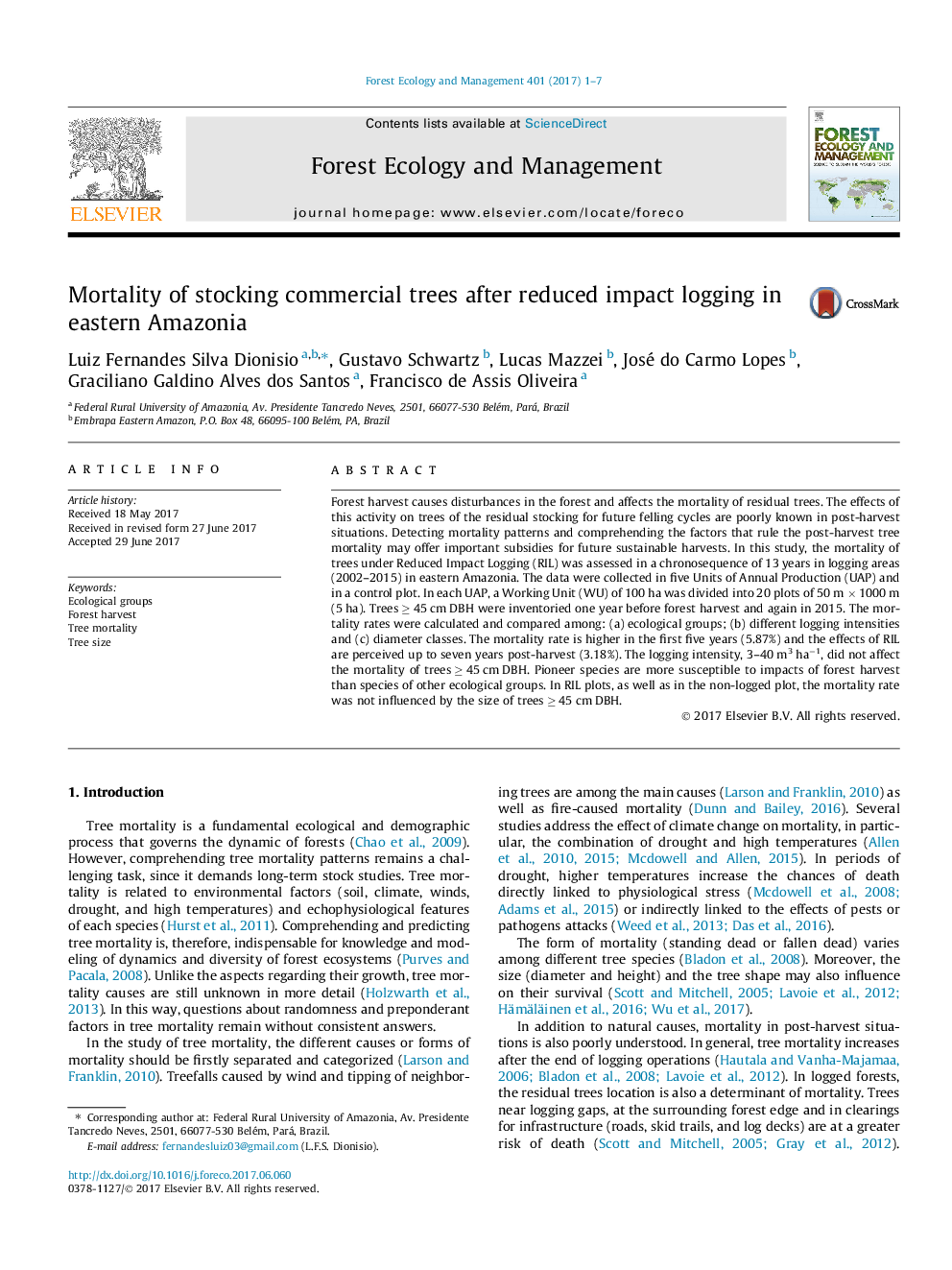| Article ID | Journal | Published Year | Pages | File Type |
|---|---|---|---|---|
| 4759295 | Forest Ecology and Management | 2017 | 7 Pages |
Abstract
Forest harvest causes disturbances in the forest and affects the mortality of residual trees. The effects of this activity on trees of the residual stocking for future felling cycles are poorly known in post-harvest situations. Detecting mortality patterns and comprehending the factors that rule the post-harvest tree mortality may offer important subsidies for future sustainable harvests. In this study, the mortality of trees under Reduced Impact Logging (RIL) was assessed in a chronosequence of 13 years in logging areas (2002-2015) in eastern Amazonia. The data were collected in five Units of Annual Production (UAP) and in a control plot. In each UAP, a Working Unit (WU) of 100 ha was divided into 20 plots of 50 m Ã 1000 m (5 ha). Trees â¥Â 45 cm DBH were inventoried one year before forest harvest and again in 2015. The mortality rates were calculated and compared among: (a) ecological groups; (b) different logging intensities and (c) diameter classes. The mortality rate is higher in the first five years (5.87%) and the effects of RIL are perceived up to seven years post-harvest (3.18%). The logging intensity, 3-40 m3 haâ1, did not affect the mortality of trees â¥Â 45 cm DBH. Pioneer species are more susceptible to impacts of forest harvest than species of other ecological groups. In RIL plots, as well as in the non-logged plot, the mortality rate was not influenced by the size of trees â¥Â 45 cm DBH.
Related Topics
Life Sciences
Agricultural and Biological Sciences
Ecology, Evolution, Behavior and Systematics
Authors
Luiz Fernandes Silva Dionisio, Gustavo Schwartz, Lucas Mazzei, José do Carmo Lopes, Graciliano Galdino Alves dos Santos, Francisco de Assis Oliveira,
